What are the 14 tallest buildings in the world?
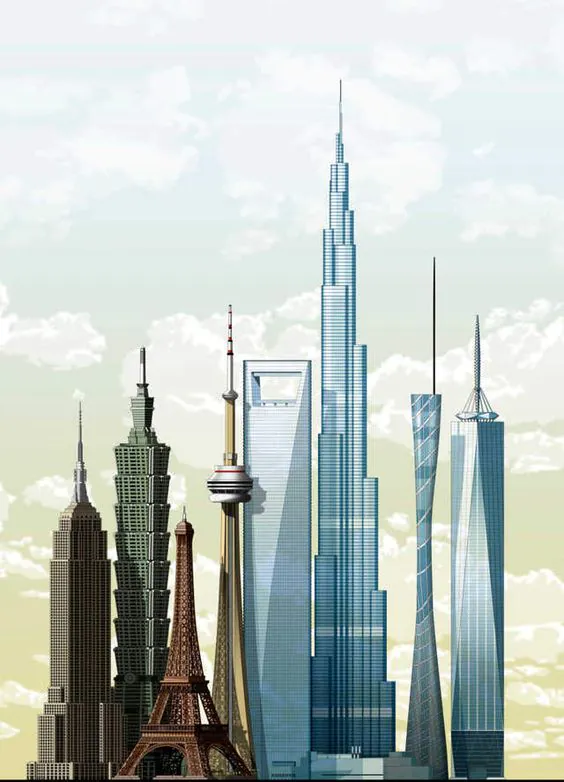
/*! elementor – v3.7.2 – 21-08-2022 */<br /> .elementor-widget-image{text-align:center}.elementor-widget-image a{display: -block}.elementor-widget-image a img[src$=”.svg”]{width:48px}.elementor-widget-image img{vertical-align:middle;display: -block}Човечеството винаги се е cheap iwc replica опитвало да достигне нови висоти и това не е cheap cartier replica по-различно, когато става въпрос за най-високите сгради в света. Коя обаче е най-високата сграда в света и къде се намира? В тази статия ще разгледаме най-високите небостъргачи, buy replica watches построени до момента:
1. Бурж Халифа (Дубай, Обединени арабски емирства)
Дата на завършване:
2010 г.
Функция: Жилищни и хотелски части, офиси
Височина: 828 метра
Архитект: Адриан Смит

Строителството на Бурж Халифа, най-високата сграда в света, започва през 2004 г., а външните части са завършени през 2009 г. Основната конструкция е стоманобетонна, а някои от стоманените конструкции за проекта идват от стария източногермански парламент. Сградата е официално завършена през 2010 г. като част от реконструкцията на центъра на Дубай.
Планът за изграждане на небостъргача се основава на целта на правителството да разшири икономиката, зависима от петрола и Дубай да получи международна известност.
Дизайнът е вдъхновен от ислямската архитектура на региона.
2. Шанхайска кула (Шанхай, Китай)
Дата на завършване:
2015 г.
Функция: Офиси, хотел
Височина: 632 метра
Архитект: Маршал Страбала
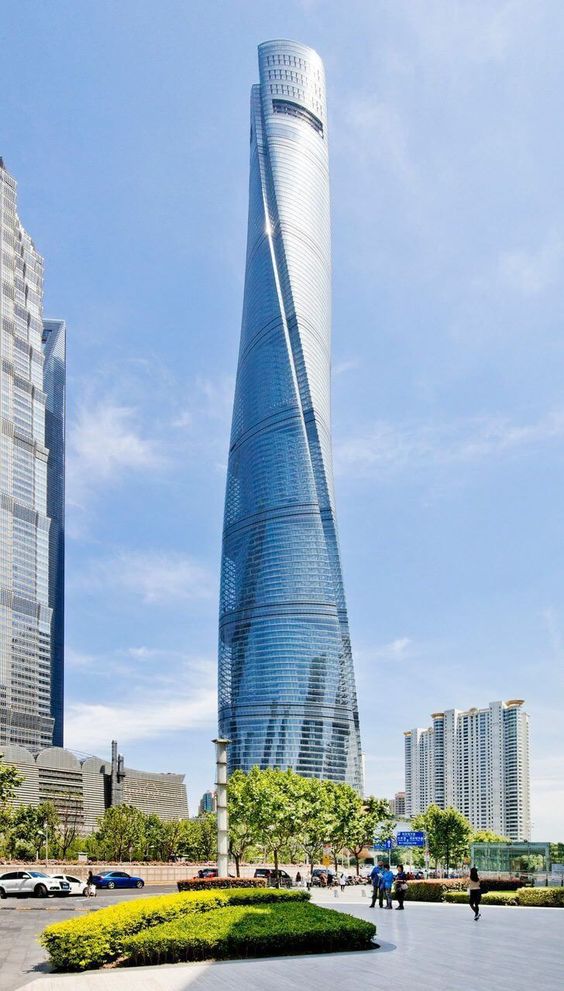
Небостъргачът се състои от девет цилиндрични кули, построени една върху друга (общо 128 етажа), всички са обвити от вътрешните слоеве на стъклена фасада. Между нея и най-външната част, която се огъва докато се издига, девет вътрешни зони дават на гостите свободно пространство. Всеки един от тези девет района има собствен атриум с тревни площи, ресторанти, кафенета и търговски магазини, както и спираща дъха гледка към града. И двете части на фасадата са прозрачни, а основата на кулата включва магазин и пространство за събития.
Повечето конструкции имат една единствена фасада, направена от силно отразяващо стъкло, с цел да се предотврати абсорбирането на топлина.
3. Кралската часовникова кула в Мека (Мека, Саудитска Арабия)
Дата на завършване:
2012 г.
Функция: Смесена употреба
Височина: 601 метра
Архитект: Дар ал-Хандасах Шаир
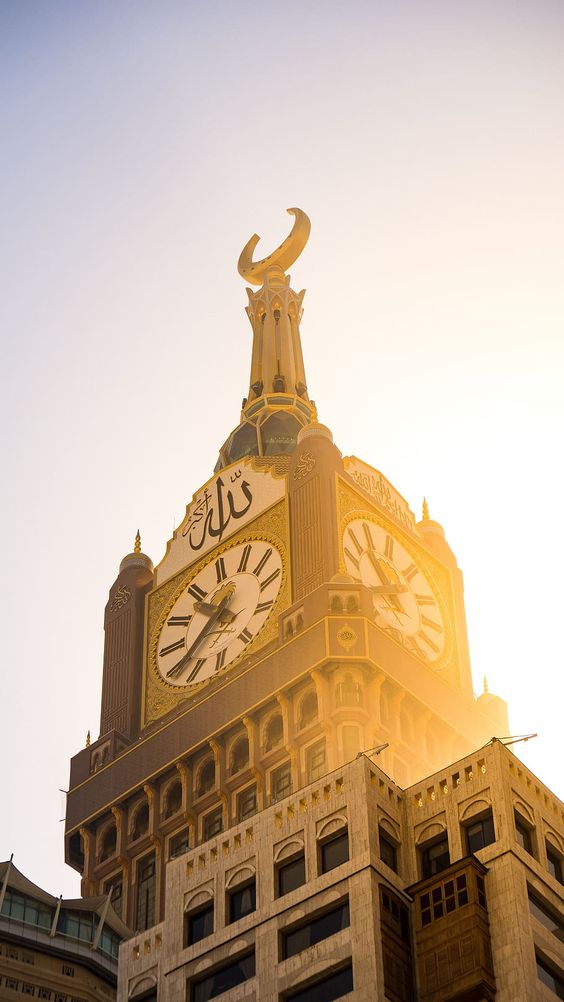
Кулите предизвикват сериозен дебат, тъй като са построени на мястото на известната османска крепост Ajyad от 18-ти век, която е разрушена, за да освободи място за тях. Комплексът от кули е само на метри от Голямата джамия в Мека, най-голямата джамия в света и най-свещеният храм на исляма. Най-високата кула на сградата е най-високият небостъргач в Саудитска Арабия.
Кулите Abraj Al-Bait Towers включват две огромни молитвени зали, които могат да поберат повече от 10 000 поклонници, посещаващи Кааба.
4. Финансов център Ping’An (Шенжен, Китай)
Дата на завършване:
2017 г.
Функция: офиси
Височина: 599 метра
Архитект: Kohn Pedersen Fox Associates
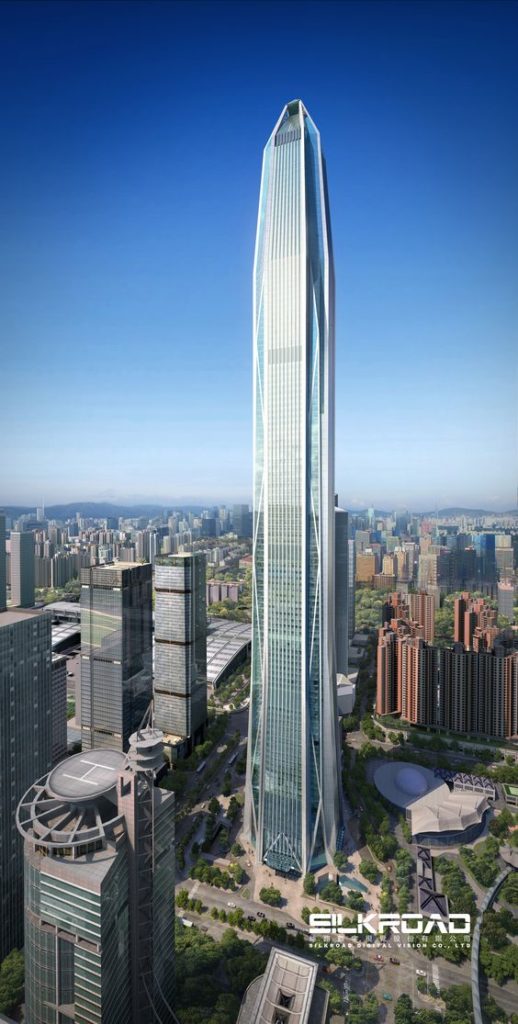
Финансовият център Ping’An, разположен в квартал Футиан на града, символизира нова версия на традиционния азиатски небостъргач: много висок, много плътен и изключително добре свързан. Тази известна и емблематична сграда се издига от видно място в центъра на града, безпроблемно свързвайки се с други бизнес и жилищни комплекси, както и с високоскоростната железопътна мрежа на делтата на Перлената река. В пълния си ръст небостъргачът ще представлява метрополис, който претърпя огромно градско разрастване – от 300 000 до около 10 милиона души – през 35-те години, откакто става първата специална икономическа зона на Китай.
Кулата е оформена като опъната стоманена тел, удължена както от небето, така и от земята.
5. Lotte World Tower (Сеул, Южна Корея)
Дата на завършване:
2017 г.
Функция: Хотел, магазини, жилища
Височина: 554 метра
Архитект: Джеймс фон Клемперер
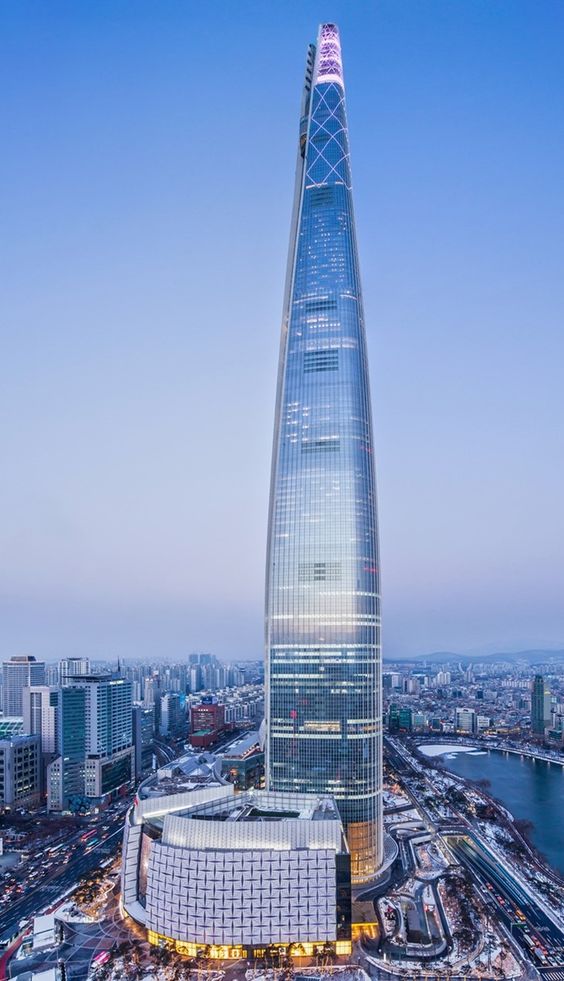
След 13 години подготовка и планиране на обекта, правителството дава окончателно разрешение за започване на строителството на кулата през ноември 2010 г., а през март на строителната площадка бяха наблюдавани първите революционни операции по сглобяване на пилоти и рамка. Покривната конструкция е проектирана така, че да издържа теглото си без използването на подсилващи опори.
Това е забележителност на Сеул и първата 100-етажна сграда в Корея.
Когато сградата е завършена, тя е обявена за четвъртата по височина кула в света, както и за най-високата в страните от ОИСР (Организацията за икономическо сътрудничество и развитие). Нивото на гледката включва невероятни панорами, както и телескоп и дори стъклен под. След завършването на сградата капандурата, която може да се намери в Seoul Sky е най-високата обсерватория със стъклен под.
6. Световния търговски център (Ню Йорк, САЩ)
Дата на завършване:
2014 г.
Функция: офиси
Височина: 541 метра
Архитект: Даниел Либескинд
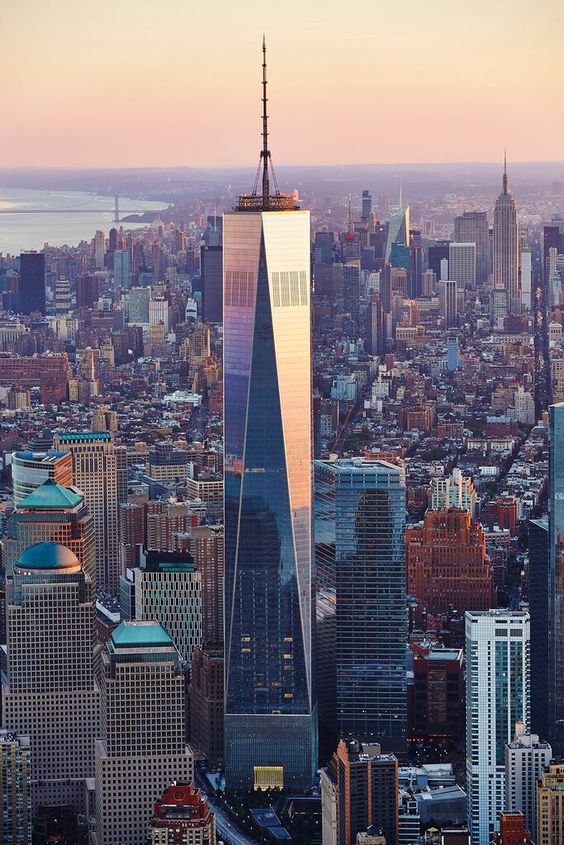
Световния търговски център (WTC) е ослепителна светлина за по-новия център на града и поразителна допълнителна характеристика към силуета на града. Той е устойчив, безопасен и естетически вълнуващ. С височина от 1776 фута, това е най-високата сграда в Западното полукълбо и емблематична забележителност на Ню Йорк.
С входове от четирите страни на небостъргача, Световния търговски център е предназначен да комбинира безпроблемно дейността на посетителите и наемателите на офиси.
Размерът на основата на сградата е точно същият като този на оригиналните кули близнаци. Има около 2000 парчета блестящо призматично стъкло, покриващо повърхността на основата. Короната на сградата е шпил, съставен от мачта и пръстен на комуникационна платформа. През нощта фарът на върха излъчва хоризонтален светлинен лъч, който може да се види на километри.
7. Финансов център Guangzhou CTF (Гуанджоу, Китай)
Дата на завършване:
2016 г.
Функция: Офиси, хотел
Височина: 530 метра
Архитект: Кон Педерсен Фокс
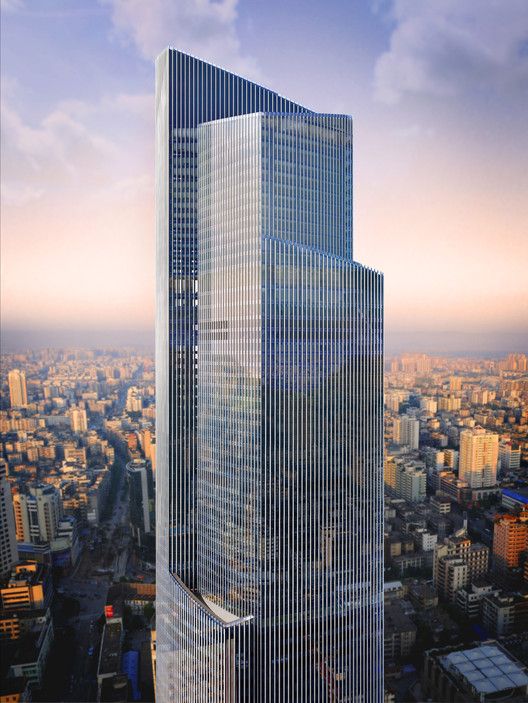
Финансовият център Guangzhou Chow Tai Fook (CTF) е парадигма на устойчив дизайн с висока плътност, център на града, с фасада, състояща се от устойчива на корозия остъклена теракота и метал, както и стъкло. Теракотените колони олекотяват фасадата на сградата. Проектантите са използвали различни подходи, за да направят центъра по-екологичен. Например, небостъргачът използва енергийно ефективни методи за намаляване на отпечатъците върху околната среда, като нови охладители и покрив на платформа, покрит със слънчеви панели.
8. Финансов център Тиендзин (Тиендзин, Китай)
Дата на завършване:
2019 г.
Функция: Офиси, хотел
Височина: 530 метра
Архитект: Ronald Lu & Partners
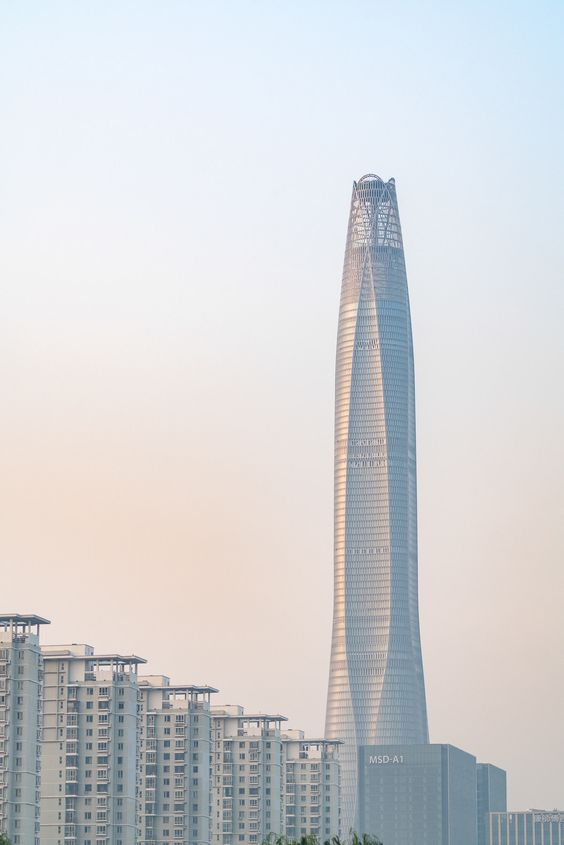
Този небостъргач обединява сложни програмни аспекти и е заобиколен от интелигентна фасада, която изобразява деликатно взаимодействие на светлина и структура. Това е пробивна парадигма за физическа и механична ефективност. Дизайнът на кулата съчетава стилистични, архитектурни и функционални критерии.
Геометрията, която е квадратна в план със заоблени ъгли, максимизира ефективността на своите три тематични приложения – офис, хотел и апартаменти – които са разположени така, че да отговарят на оптималните разстояния за всяка от тези функции.
Извитата фасада на небостъргача е резултат от техники за структурна ефективност. Неговите кристални стъклени панели се простират от фоайето до короната, придавайки на цялостната архитектура на сградата мощен монолитен характер.
9. China Zun Tower (Пекин, Китай)
Дата на завършване:
2018 г.
Функция: офиси
Височина: 527 метра
Архитект: Кон Педерсен Фокс
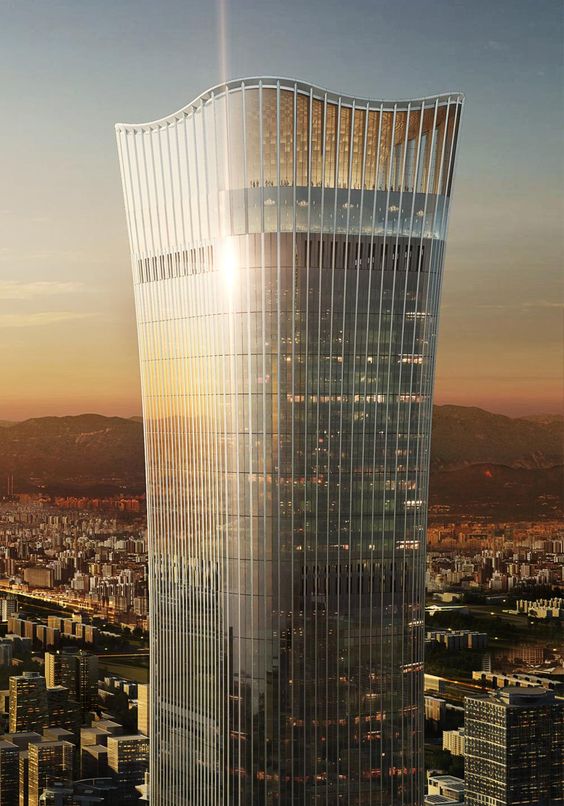
Според създателите, терминът China Zun произлиза от zun, антична китайска чаша за вино, която е повлияла на дизайна на сградата. Небостъргачът ще остане най-високата сграда в Пекин в обозримо бъдеще, тъй като през 2018 г. властите ограничават новите разработки в централната бизнес зона до не повече от 180 метра, за да облекчат задръстванията.
10. TAIPEI 101 (Тайпе, Тайван)
Дата на завършване:
2004 г.
Функция: офиси
Височина: 508 метра
Архитект: C.Y. Lee & C.P. Уанг
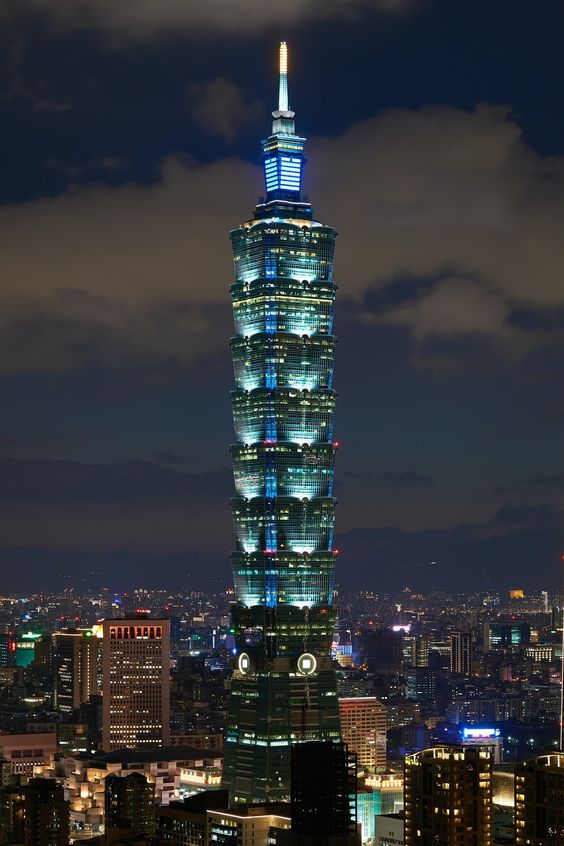
За да се изгради цялото, структурните части са свързани една върху друга. Тази ритмична естетика е нова в небостъргачите. За защита от катастрофи и щети от вятър, сегментният TAIPEI 101 включва Mega Structure System. Въздействието на вятъра върху повърхността на високите конструкции се премахва, тъй като всеки осем етажа е автономна зона. Дизайнът на основата осигурява комфорт и безопасност на пешеходците. Структурата е отражение на традиционната китайска архитектурна теория, подобно на гъвкавия, но упорит бамбук, който се издига към небето.
Полупрозрачните и неотразяващи екрани са енергийно ефективни и топлоотразяващи, осигурявайки на жителите ясна перспектива за света около тях.
11. Световен финансов център в Шанхай (Шанхай, Китай)
Дата на завършване:
2008 г.
Функция: Офиси, хотел
Височина: 492 метра
Архитект: Уилям Педерсън
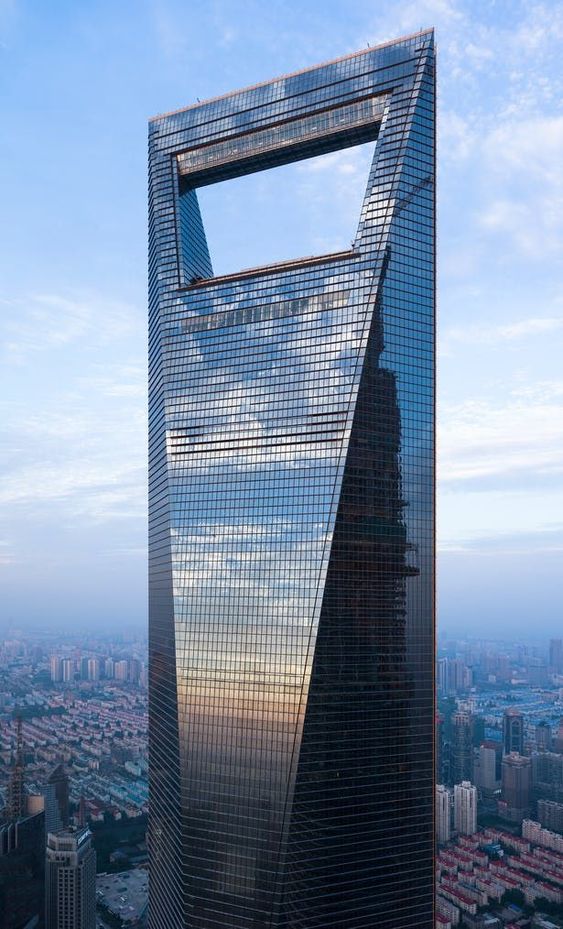
В Шанхай, Китай, Шанхайският световен финансов център е небостъргач със смесено предназначение. Небостъргачът се намира в сектора Пудонг на града, до 88-етажната кула Джин Мао. Той е висок 101 етажа и е проектиран от американската архитектурна компания Kohn Pedersen Fox Associates от Ню Йорк. След 11-годишен процес на разработка, сградата е открита през 2008 г. По време на построяването си тя е втората по височина структура в света, следвайки само небостъргача Taipei 101 в Тайпе, Тайван. По-късно обаче е изместен от по-големи проекти.
12. Международен търговски център (Хонконг, Китай)
Дата на завършване:
2010 г.
Функция: Офиси, хотел
Височина: Хонконг, Китай
Архитект: Кон Педерсен Фокс

ICC е корпоративна кула в Хонг Конг, открита през 2010 г. Това е ключов компонент от конструкцията на Union Square, която се намира над гара Kowloon. Това е четвъртият най-висок небостъргач в света, по времето, когато е завършен през 2010 г.
13. Central Park Tower (Ню Йорк, САЩ)
Дата на завършване:
2020 г.
Функция: Жилищна
Височина: 472 метра
Архитект: Адриан Смит
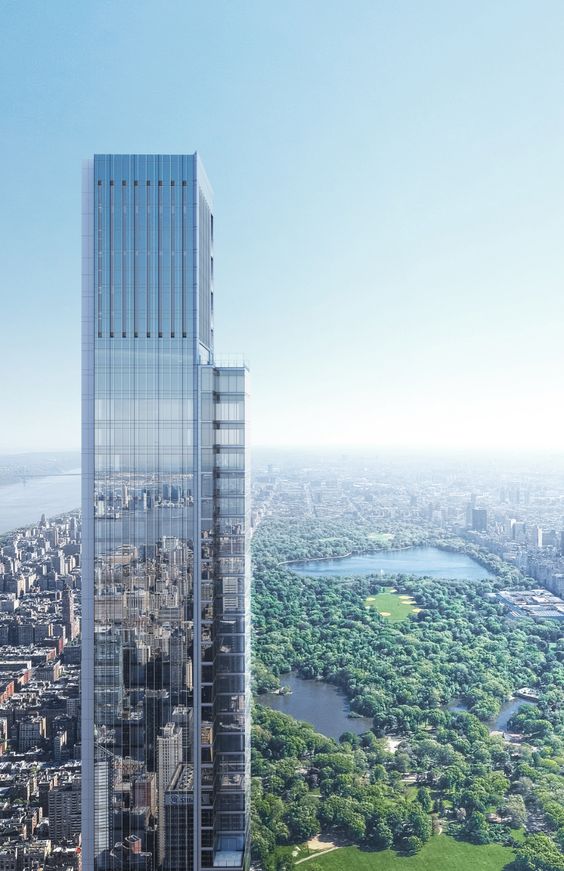
Най-високият жилищен небостъргач, строен някога, е кулминацията на десетилетие на планиране и сътрудничество между архитектите. Изисканата и отличителна фасада отразява динамично разнообразие от цветове и светлина, докато слънцето се движи по повърхността на сградата. Central Park Tower е идеалната жилищна сграда със своите спиращи дъха гледки, великолепна архитектура, елегантен дизайн и обслужване като в хотел.
Уникалният отпечатък на Central Park Tower позволява изграждането на най-великолепните апартаменти в града, пълни с персонализирани декорации, най-добрите естествени покрития и най-зрелищните гледки в Ню Йорк.
Зоните за живеене и отдих са разположени в ъглите на апартаментите, за да се възползвате от разнообразни панорами и гледки към града.
14. Lakhta Center (Санкт Петербург, Русия)
Дата на завършване:
2019 г.
Функция: офиси
Височина: 462 метра
Архитект: Тони Кетъл
.
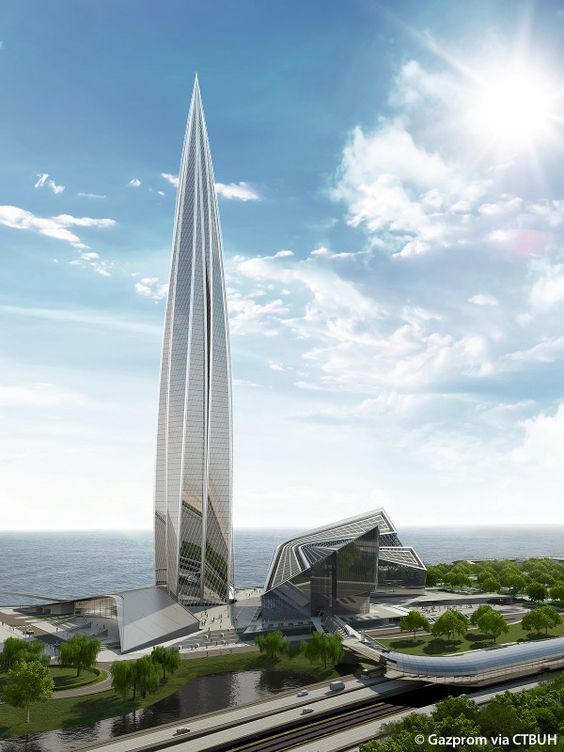
Дизайнът на кулата включва различни зелени и енергоспестяващи технологии. Помещенията се отопляват с помощта на излишната топлина, генерирана от техническите съоръжения. Сградата също използва нискошумна технология, шумопотискащи устройства и звукоизолиращи окачени фасади.
Вероятността от обледеняване на конструкции е доста голяма поради особеностите на прекалено влажната и ветровита среда в северозападния район на Русия.
Инженерите са използвали метална мрежа вместо стъкло, за да предотвратят пълното замръзване на шпила на кулата. Високото стъкло ще се нагрява, за да се избегне образуването на лед и да се осигури оптимална видимост. Ще бъде изградена нова свободностояща електроподстанция, която да доставя енергия до Lakhta Center и околните региони, без да се натоварва допълнително настоящата инфраструктура.
Снимки: Pinterest
